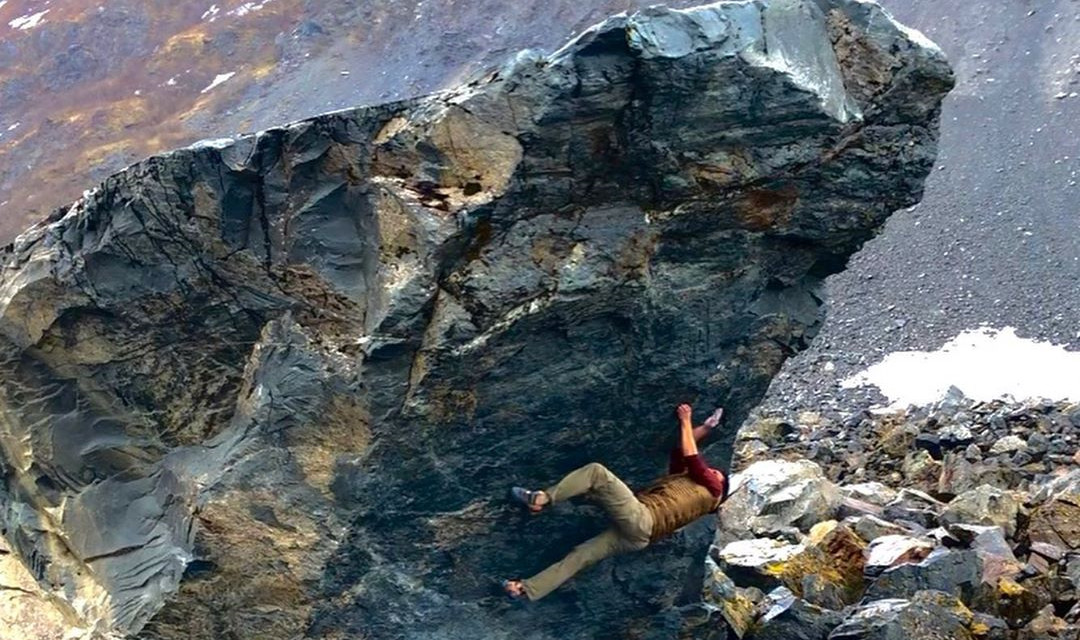You’ve probably heard the phrase “limit boulder” a million times; people say it, but few actually know what it means, let alone how to apply it to a training program. At its core, limit bouldering is about giving brief, high intensity, vigorous effort. If you’re not trying as hard as you can and you’re still falling on your butt, you’re not limit bouldering. Failure is the goal with this training; you want to be trying a regimen that’s way out of your league, and you want to be trying really friggin’ hard.
Problem Selection
Here are some guidelines for picking the right limit boulder problems:
- 6 or fewer hand moves – the goal is maximum effort which simply can’t be delivered on the 12th move of a hard boulder problem.
- Dynamic movement – we’re looking for explosiveness to develop power, so think wide compression moves, lunges, cross-body dynos, etc. Make the moves wild and unintuitive, no double dynos between jugs.
- Use decent holds – grip strength shouldn’t be the point of failure when limit bouldering. You want to fail during the movement rather than peeling off because the holds are poor, but be careful not to use holds that are too good. A rule of thumb I employ is to make sure you can hang from all the holds on the problem, but not easily.
- Really really hard – if you can do 4 of the 5 moves straight away, the problem likely isn’t hard enough. Think about the hardest problem you’ve ever come close to doing but weren’t quite able to finish, and make your limit boulder problem even harder. If you can send this problem in one session, it was far too easy. I’ve sent limit boulder problems after 5 sessions and I consider that too easy.
Session Design
Limit bouldering sessions are likely going to be the highest intensity sessions in your program, so the sessions will be short and there’s going to be lots of rest between very brief attempts. Some climbers don’t believe they’re trying hard enough unless they’re getting sweaty, pumped, and out of breath. Don’t be one of those climbers. Here’s what a typical limit bouldering session ought to look like:
- 3-4 total problems that are very different from each other in terms of wall angle, hold type, and movement style
- Rest 2-3 minutes between attempts, and 5 minutes between boulders
- Spend about 20 minutes, or about 4-6 attempts, per boulder
- Move on when the time is up, this isn’t a project session, it’s training
- Give full effort every single attempt
Programming
Because of the intensity, limit bouldering sessions should only be done once or twice per week, depending on the current training focus. If you’re building strength or endurance, once is plenty for maintenance. If you’re using limit bouldering sessions to develop power, twice is optimal. Three times a week can work quite well during a power phase, provided you shorten the sessions a bit and follow up with other training.
Remember to prioritize limit bouldering sessions first if you plan to do more training on the same day, and make sure you come into each session fully rested and recovered.
Take a 15-20 minute break prior to additional lower intensity training.
Summary
- Frequency: 1-3x per week, 48+ hours between sessions
- Intensity: 85-95%
- Volume: 3-4 problems, 4-6 attempts per problem
- Rest: 2-3 minutes between attempts, 5 minutes between problems
- Goal: Increase maximum strength and power output in a sport-specific manner
- Equipment: Boulder area








